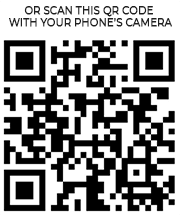Cancer Symptom Tracker: Your Health Assistant
Living with Cancer means dealing with unexplained weight loss, fatigue, pain, and more. But here's the truth: Data is your most powerful tool. Every logged symptom reveals patterns—so you can take informed action.
Cancer is a disease in which abnormal cells divide uncontrollably and can invade nearby tissues. There are many types of cancer affecting different body parts. Tracking symptoms helps monitor treatment effects, manage side effects, and maintain quality of life.
Key Cancer Symptoms You Should Track
Struggling with symptoms like these? Tracking them reveals patterns, triggers, and how they impact your daily life.
Unexplained weight loss
Fatigue
Pain
Skin changes
Persistent cough
Change in bowel or bladder habits
Unusual bleeding
Lumps or thickening
Difficulty swallowing
Recent change in wart or mole
Track Your Cancer Treatments
Tracking how these common treatments affect your symptoms can help you and your healthcare provider optimize your care plan:
Our tracker helps you monitor when you take medications and how they affect your symptoms over time.
Standardized Cancer Assessments
Complete these evidence-based assessments in the App to measure your severity and monitor your progress:
⚡ Knowledge Is Your Superpower
The difference between feeling overwhelmed by Cancer and feeling in control starts with data. When you track your symptoms, you transform uncertainty into clarity. Every data point brings you closer to understanding your unique patterns.
It's free to try for anyone—whether you're managing your own condition, supporting a child, helping an aging parent, or assisting a partner. Our tracker adapts to your specific role in the health journey.
How the CareClinic Cancer Symptom Tracker Adapts to Your Needs
Adults
Caregivers
Parents of Children
Young Adults
Your Complete Cancer Management Toolkit
Uncover Patterns & Insights
Map your Cancer symptoms like a detective solving a case.
Understand Your Medication's Impact
Turn guesswork into strategy. See how treatments affect your well-being with clear health insights.
Objectively Measure Your Progress
Use clinically validated tools to objectively measure your progress.
Other Tools You May Like...
Plus 4 more specialized tracking tools available
Access All Tracking ToolsAlso Supports Other Conditions Like
Success Stories from Our Community
"The difference between guessing and knowing is data. Since tracking my Cancer, I pinpointed I could have meaningful conversations with my healthcare team, which has been invaluable."
"Setting up alerts in the sleep tracker warned me when fatigue patterns changed. This changed everything about how I approach my Cancer."
Take Control of Your Cancer Journey
Transform from feeling like a passive patient to becoming an informed self-advocate. Join thousands who've discovered new insights about their condition.
Designed by people who understand the daily challenges of managing chronic conditions, we're here to support you and your ❤️ ones.
Download Your Cancer Tracker NowYour Data is Protected
Private & Secure
HIPAA Compliant
GDPR Compliant
Never Sell Data
Your data is yours: You get full control over who can view your information. CareClinic keeps all your data secure and encrypted.
References based on studies by:

